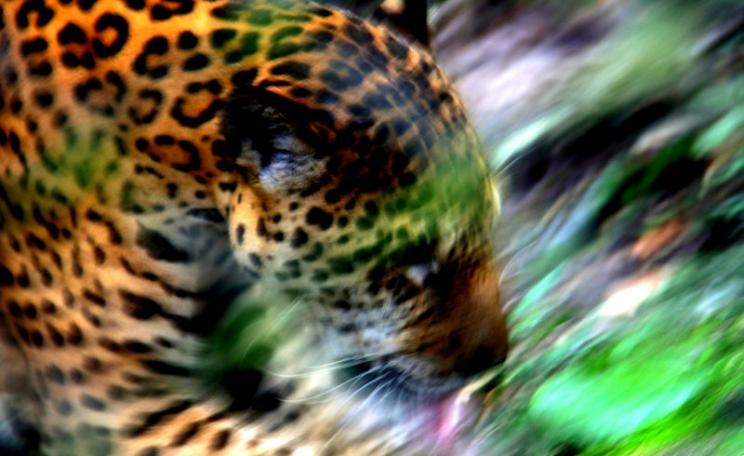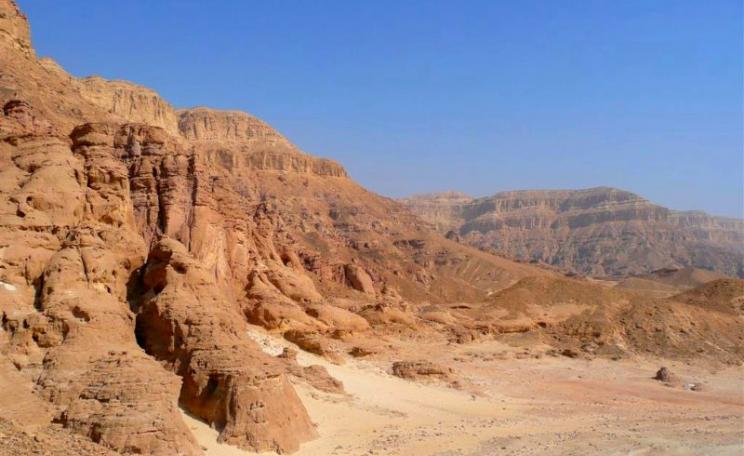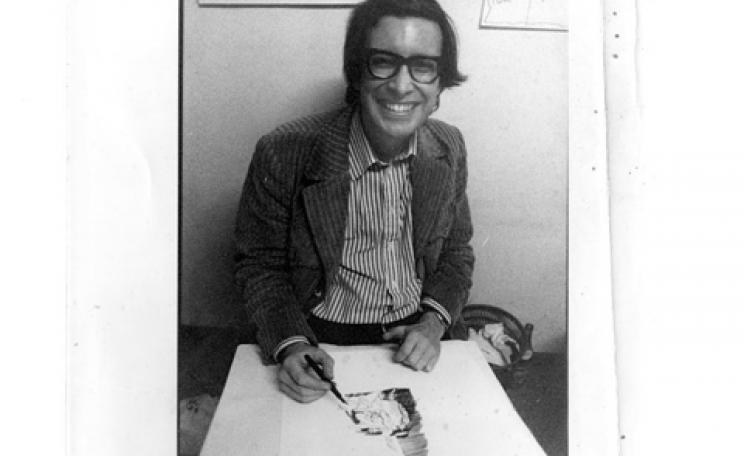Teddy died on August 21st, in Tuscany, in his hill-top house, a converted convent, which overlooked one of his favourite places in all the world, no less than the mediaeval city of Siena. For Teddy, Siena embodied much of what he believed in; a city with ancient roots going back to the Etruscans, where civic pride and a vibrant living culture was the result of centuries of republicanism and popular participation in the running of the city and where everyone knew everyone else. And the Siennese acknowledged Teddy as one of their own, such that, when word got out, just days before his death, people flooded in from the City to pay their respects to a man whom they admired for his wisdom, humanity and no less his sense of fun.
Teddy Goldsmith, 80 when he died, has left us a lasting legacy of ecological thought as expressed particularly in his book The Way: an Ecological World View and as co-editor with Jerry Mander, of The Case against the Global Economy. But, it will be as founder, publisher and sometimes editor of the Ecologist magazine that he will probably be best known.
When I was introduced to Teddy in 1968 it was shortly after Norman Lewis’s apocalyptic account in the Sunday Times of government-sponsored genocide in the Brazilian Amazon. One of the reactions to that article was the foundation of Survival International, the organisation which par excellence has fought for indigenous rights across the planet, and it was there in the offices of the fledgling organisation that Teddy met Robin Hanbury-Tenison, its founder, director and now president, as well as Robert Allen, who then became Teddy’s right hand man in the launching of the Ecologist and was one of the main writers of A Blueprint for Survival, first published in 1972.
We had debated long what to call the Ecologist and when we finally settled on the name we basically threw down the gauntlet to all those academics in their ivory towers who believed that ecology was their discipline and their’s alone.
When Teddy attempted to join the British Ecological Society, his application was roundly rejected, a rejection which only confirmed Teddy in his opinion that contemporary ecologists, with rare exception, did not understand the nature of ecology. As he later argued in the pages of the magazine and then in The Way, natural ecosystems are a composite of complex interacting systems which served to provide stable conditions for the whole, thus resisting change. Teddy stressed that the wisdom of nature, the consequence of more than 3000 million years of evolution, was to anticipate and be prepared for stable environmental conditions, and he vigorously rejected the notion that nature, through random mutations, was constantly and blindly pushing for change.
He therefore very much embraced the evolutionary ideas of the German born Richard Goldschmidt, a distant relative, who had pioneered ideas on macro-evolution and who, like Teddy, could not conceive of the ecosystem as a random assembly of disparate parts fighting for survival in a sea of competition.
Not surprisingly, Teddy found himself very much in agreement with Stephen Jay Gould and Niles Eldridge and their 1972 theory of Punctuated Equilibrium in which they stressed that the evolutionary pattern from the palaeontological record showed long periods of stasis followed by abrupt change. Their theory, in sharp contrast to the neo-Darwinist ideas that a constant pulse of mutations gradually and inexorably brought about evolution and the formation of new species, was very much in line with the notion of cataclysmic events, abrupt climate change as in the Permian, for instance, bringing about mass extinctions and therefore leading the way to dramatic evolutionary change, followed by an extended settling-down period in which life once again stabilised its local environment.
Teddy, always the avid reader, was by then conversant with the General Systems Theory of the biologist, Ludwig von Bertalanffy, who saw the emergence and evolution of ecosystems as the result of the relationships and interactions of the component organisms. Teddy extended that idea into the notion of the behaviour of the parts being ordained by what was required to maintain the proper running and health of the next organisational level up. In essence, Teddy stressed, the behaviour of the parts must serve the requirements of the whole, just as a stable family structure would serve the community of which it was part and the community the well-being of the local environment and so on, all the way to Gaia. Indeed, those ideas were undoubtedly a forerunner to James Lovelock’s Gaia theory in which external physical parameters such as surface temperature and chemistry, and consequently climate, were maintained by the component, living parts of the ecosystem at levels as close to the optimum, as might be feasible at that moment in time and space.
Tribal interests
Teddy’s fascination with tribal peoples is wholly understandable in the light of his conviction that the behaviour of the parts helps determine the well-being of the whole. That fitted in admirably with the anthropological functionalism of Bronislaw Malinowski, who from his experience in the Melanesian Trobriand Islands in the 1940s had come to the conclusion that reciprocity and exchange played a vital role in cementing relations between individuals and the society of which they were part, and that society combined with culture would arise as an emergent property of humans collaborating with each other, once the fundamental needs of individuals had been met. Add in the findings of Gerald Reichel-Dolmatoff, with his extraordinary experience of the indigenous peoples of Colombia, and especially of the Sierra Nevada de Santa Marta and the Amazonian Vaupes, and you have a clear picture of the way that the behaviour of the individual serves to maintain their concept of ecological order and balance.
In fact, for the Amazonian Indian, such as the Tanimuka and Tukano, as well as for the Kogi of the Sierrra Nevada, order is in nature and the cosmos, while disorder is in the affairs of men; hence, to survive, the indigenous peoples of the Amazon must look to nature and in so doing, and aided by acute observation, they become ecologists by culture. The health of the community, as led by the shamans and chiefs, therefore depends on respect for the natural order within the surrounding ecosystem.
Having published various articles on the cosmological vision of the Tukano and Kogi in the Ecologist, Teddy was later instrumental in raising support for Reichel-Dolmatoff during his last years, one outcome being the publication of The Forest Within. But, just as biologists did not like the idea of Gaia — for how could organisms comprising an ecosystem have any notion of how they should behave to satisfy the requirements of the whole? — so sociologists and behaviourists would not readily accept Teddy’s view that a society composed of alienated, disparate individuals could not but fail in generating a healthy community and, in consequence, a healthy environment.
The threat of the market
The sociological economist Karl Polyani was another source of Teddy’s vision of the world and Polyani’s book The Great Transformation certainly had a profound influence on how Teddy viewed the market and human interrelationships. The Stone Age Economics of the anthropologist, Marshall Sahlins and Roy Rappaport’s studies of the Tsembaga of New Guinea all contributed to Teddy’s conviction that a market, imposed from outside on society rather than being embedded within it, would ultimately destabilise society and cause its breakdown.
Going still further, as he did in his book The Stable Society, Teddy believed that ‘self-sufficiency’ and ‘sustainability’ were unachievable in a market economy for the simple reason that such markets, with their ethos of perpetual growth, would override a community’s perception of ecological limits and lead to the discrediting and rejection of traditional leaders by usurping their role.
Teddy loathed totalitarian regimes, of whatever political colour and he was no racist: on the contrary, he revelled in the extraordinary diversity of cultures and peoples. But he saw danger were one culture to swamp and destroy another, as through mass immigration or through the imposition of colonial rule or, as is happening now, through the global market and mechanisms, such as the WTO (World Trade Organisation), which force their trade rules and terms of negotiation upon hapless communities. In fact, Teddy, by no means uniquely, saw just how global trade, all in the name of ‘development’, had destroyed and was destroying traditional agriculture, particularly in countries such as India, with the net result of hundreds of millions of people being displaced from the land and having nowhere to go but to the slums of cities such as Delhi.
From the very beginning, Teddy used the Ecologist to express his views and to challenge the very tenets of the industrialised society. As a result, when the Club of Rome’s Limits of Growth (MIT Press) was published early in 1972, it provided Teddy with the ammunition necessary for underpinning his conviction that our survival in Britain and in the world at large was at stake unless we put in place policies for achieving sustainable living. Such policies were then in direct opposition to those of government. At that time Teddy thought that the limits (to growth) would be reached sooner rather than later. In real terms he was right, the world of consumers is now, some 40 years on, living well beyond its means, and we are currently consuming natural capital worldwide at a rate far exceeding the Earth’s ability to regenerate it.
Emerging climate
It was clear to Teddy and to those of us working with him, that climate was an emergent property of life’s close knit interaction with the Earth’s surface and that climate predictions based on purely physical parameters, while disregarding life as a dynamic factor in the formation and tempering of climate, would underestimate substantially the changes caused through greenhouse gas emissions and global warming.
As with so many environmental issues, and thanks to Teddy’s incredible insights, we were ahead of the game and what we said, for example, in the special Ecologist issue on climate change in 1999 anticipated in terms of the increasing severity of climate change that which the IPCC — the Intergovernmental Panel on Climate Change — published in its Fourth Assessment Report of 2007. Meanwhile, Teddy never doubted the important role of tropical rainforests in stabilising global climate and that we were collectively mad to allow deforestation to continue on the scale of the latter part of the 20th century.
Quite aside from his deep intellectual understanding of what was happening in the world, Teddy was always wholly engaged in direct action to generate change, whether against the World Bank for its grotesque investments in the building of massive dams or against the further construction of nuclear installations. Certainly Teddy and others brought about a dramatic volte face in the World Bank’s attitude to and support of big dam projects in the developing world, of which the Narmada Dam in India was a spectacular example.
And it was Teddy who initiated our protest against the proposed construction of a nuclear power plant in Luxulyan just 6 miles away from our homes in Cornwall. That he did with considerable aplomb, sitting himself on a piece of farm machinery placed in the entrance of the field where the CEGB – the Central Electricity Generating Board – had decided to carry out test drillings. He refused to move, despite threats, and so the occupation of the site began, lasting for six months, until the CEGB finally went away. According to Lord Denning in the high court judgement on the siege of Luxulyan, we were ‘rent-a-mob’, out to make trouble, and the CEGB should have caused a rumpus such as to have got us all arrested.
Just before the Windscale Public Inquiry in 1976, held to discuss the future of reprocessing nuclear waste, we all went up – several hundred in all – to the Windscale site on a FOE sponsored train. It was a rainy, windswept day at that desolate site, with the chimney towers of the plutonium piles not far beyond the perimeter fence. And it was Teddy who fired us up with his vivid descriptions of the implications of permitting the British government to continue with the nuclear nightmare.
That was the time in the early 1970s when we discovered that the health physicist, John Dunster had recommended to the British government that discharges of radioactive waste, in particular caesium-137, from the reprocessing plant at Windscale and into the Irish Sea, should be at sufficiently high concentrations for the radionuclides to be readily tracked through the environment. It was an extraordinary excuse for getting rid of acutely embarrassing levels of dangerous radioactive substances which had accumulated in the cooling ponds for spent reactor fuel. And as the levels of contamination rose so did the nuclear regulatory body – the Nuclear Installation Inspectorate – rise to the occasion by giving the green light for the discharges to go up as requested and all in the name of science.
It is not commonly known that Teddy, together with David Brower, the founder of Friends of the Earth in 1969, established the idea of publishing a daily newspaper at major United Nation Events. The first time those Eco papers appeared was at the 1972 Stockholm Conference on the Human Environment, and we were all present, Robert Allen, Walt Patterson, Amory Lovins myself and not least Richard Willson who by then was an integral part of the Ecologist with his cartoons which, with their grotesque exaggeration matched Teddy’s unremitting critique of modernism and its socio-ecological impact. Just some of Richard’s cartoons together with Ecologist editorials have now been published as The Doomsday Funbook.
Synergy with Gaia
James Lovelock’s Gaia Theory fitted in so beautifully with Teddy’s ideas on the emergent properties of systems and because Jim was living relatively close to Camelford, from where we were then publishing the magazine, we decided to hold a symposium on the implications of the Gaia Theory for ecology and the environment. And so, aside from Jim, we invited Lynn Margulis who had contributed so much to our awareness that bacteria basically run Gaia, whether free-living or embedded in the eukaryotic cell as chloroplasts or mitochondria. Brian Goodwin, Maewan Ho, Peter Saunders, Martin von Hildebrand, Andrew Watson, Peter Westbroek, Michael Whitfield, all came to that first ‘magical’ meeting and later we published the proceedings. A year later we followed up our Gaia symposium with one on Gaia and Evolution, and then a year on, Gaia and Symbiosis. Finally, we published a book, Gaia in Action: Science of the Living World, where we tried to embody some of the best contributions from those three meetings.
Carl Jaeger was present at the last two Gaia symposia. Some years before, in the United States, he had pioneered an education programme involving experiential learning in which the students travelled abroad, accompanied by a mentor, and he saw Teddy Goldsmith in just such a role. So, it was there in Cornwall that Teddy elaborated a study abroad programme on ecology, in the broadest sense of the word, and he brought us all into it, especially Brian Goodwin, Maewan Ho, Peter Saunders and myself.
1991 was the first year with the students, the majority from various colleges and institutions across the United States, and the course, now transformed into Rethinking Globalisation: Society, Culture and Ecology still runs on, with some 25 to 30 students travelling over the course of the year (academic) to some 5 different countries across the globe. Teddy would meet with the students at different moments in their travels, first in the UK, either down in Cornwall or in Cambridge, then in India, New Zealand and on occasions in Washington, DC. The last time he did so, accompanied by Zac Goldsmith, who had himself attended the course, was three years ago in Cambridge. The net result is some 500 students in all who will have had the privilege of knowing Teddy and experiencing his breadth of knowledge and extraordinary humanity. Sadly, this year, two of the faculty whom Teddy had brought in to the programme, Smitu Khotari from India, and Brian Goodwin who had just retired from overseeing the MSc course at Schumacher College, both passed away.
Teddy was the most unpretentious person whom I have ever met, happy to encounter new people from all walks of life. I remember him on one occasion locked in conversation, in Spanish, with the Andalucian mother of a friend of mine. As a campesina, she had spent her life working in the countryside and her passion too was chickens.
Teddy’s ecological legacy lives on in so many of us who had the privilege to know him over the years. I am thinking of Robert Allen, Nicholas Hildyard, Simon Retallack, Colin Hines, Graham Searle, Jonathon Porritt, Jeremy Faull, Robin Hanbury-Tenison, Satish Kumar, myself and many many others, and not least his family, Kathy his wife and indeed Zac.
And we must remember too that his influence was worldwide, as marked by the fact that specific country versions of the Ecologist now appear in France, Spain, India, New Zealand, Brazil, Colombia, the Lebanon and Italy. Those Ecologists are the result of the work of dedicated people who have been inspired by the writings of Teddy, but more particularly by the generous humanity of the man.
Peter Bunyard is the Ecologist's Science Editor







